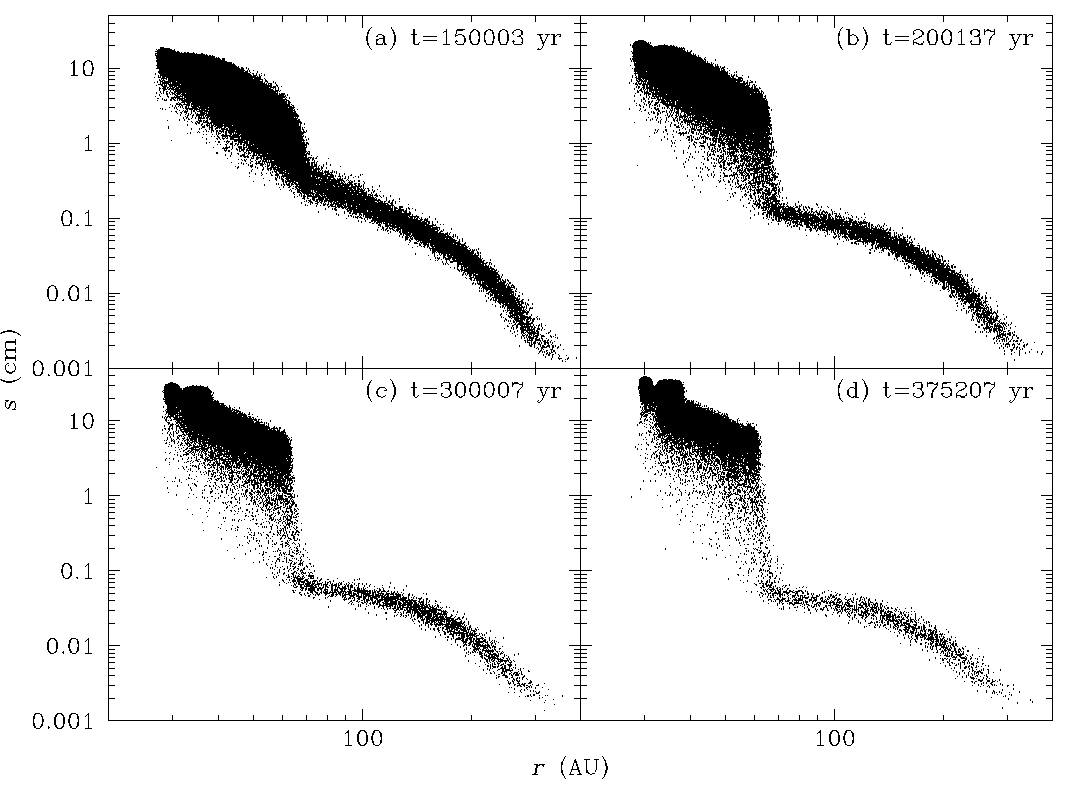Guillaume Laibe
Dust evolution in protoplanetary discs
Simulations of grain growth in protoplanetary discs
Collaborators: Dr. J.-F. Gonzalez (CRAL, Lyon) and A.Pr. S.T. Maddison (Swinburne University, Melbourne).

During my Ph.D., I extended a 3D SPH Lagrangian code (gas and dust) initially developed at the Ens de Lyon to quantify the role of grain growth during the early stages of planet formation. The result was the first 3D SPH bifluid code able to treat the grain size evolution in the disc (Laibe et al. 2008). I was therefore the first to show that grain trajectories in the disc consist of three typical phases: settling and fast growth, intense migration and weak growth and finally, weak migration and efficient growth. I also highlighted that the shape of the migration plateau formed by the grains is connected to the surface density profile of the disc (Figure 1). This work was then extended to study the evolution of the dust grain distribution in a disc where a planet had already formed, showing that the pressure maximum created by the external edge of the gap associated with a planet, is a favourable place to form other planets since grains pile-up and grow very efficiently.
